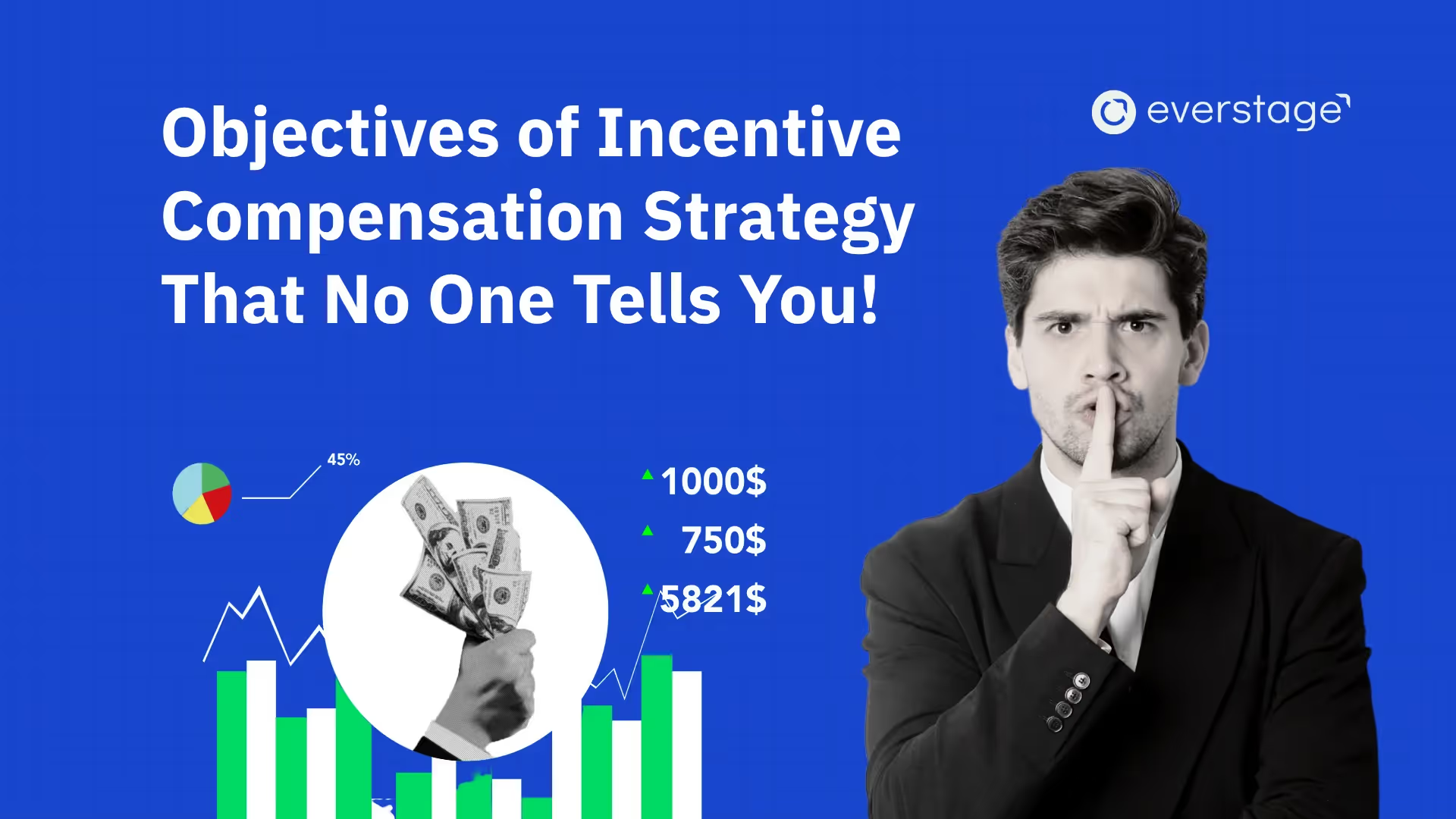Incentive compensation implementation challenges cover the obstacles that arise when putting new sales compensation plans into action, with execution being just as critical as design for success.
- Address communication gaps early to prevent confusion and boost rep buy-in.
- Anticipate system delays and integration issues to avoid payout errors.
- Align leadership expectations with on-the-ground understanding for smooth adoption.
- Prioritize feedback and training to ensure the plan delivers intended results.
Introduction
The first time I helped roll out a new incentive compensation plan, everything looked solid on paper. The structure was aligned to goals, the logic was tight, and we even had a nice-looking deck to explain it to the sales team. But within two weeks, the questions started pouring in.
“Why is my payout lower than expected?”
“Where’s the tracker?”
“I don’t get how this tier works. Can someone walk me through it?”
It wasn’t the plan that failed. It was the implementation. We hadn’t planned for the communication gaps, the system delays, or the disconnect between what leadership thought was clear and what the reps actually understood.
That experience stuck with me. Because incentive compensation isn’t just about what you design, it’s about how you bring it to life. Whether you're introducing a new sales compensation plan or rolling out a platform like Everstage to manage it, execution is everything.
In this blog, I’ll walk you through the most common incentive compensation implementation challenges and how to avoid them. From misaligned metrics to system breakdowns, we’ll look at what causes comp plans to stall and what it really takes to get them running smoothly.
What Are Incentive Compensation Implementation Challenges?
Incentive compensation implementation challenges are obstacles companies face when rolling out performance-based pay systems. These challenges include misaligned KPIs, overly complex plan structures, poor data integration, and low adoption of compensation software.
Execution failures often stem from unclear communication, inadequate training, and system breakdowns. Without alignment between strategy, technology, and performance metrics, even well-designed plans can fail.
These challenges usually show up at two levels: the plan level and the system level.
- At the plan level, challenges often come from too much complexity. When rules are unclear or payouts don’t match real sales behavior, reps lose confidence. Even simple plans can cause confusion if the triggers aren’t well explained. And when motivation drops, performance follows.
- On the system side, disconnected tools and manual processes slow everything down. Broken spreadsheets or poorly integrated software lead to payout delays and errors. If reps can’t trust the numbers they see, adoption falls apart. The real issue often isn’t the plan, it’s how it’s delivered.
And then there’s the human factor. If managers aren’t equipped to explain the plan, or reps aren’t properly onboarded, adoption drops. When feedback loops are missing, small issues turn into recurring headaches. In many cases, companies assume the plan is the problem when the implementation is broken.
To solve for this, companies need to look beyond design. They need to build compensation processes that are understandable, flexible, and supported by systems that actually work for the people using them.
Why Incentive Compensation Strategy Needs a Seamless Implementation
A well-designed incentive plan only works if it's implemented correctly. Without a smooth rollout, even the most strategic plans can create confusion, errors, and frustration across teams.
Here’s why execution matters just as much as design:
- It aligns incentives with changing business objectives. As your strategy evolves, your compensation system should adapt just as quickly, without disrupting performance.
- It reduces payout errors and rep dissatisfaction. A broken payout process can damage morale and lead to trust issues between reps and leadership.
- It lowers compliance and legal risk. Clear rules, audit-ready systems, and accurate payouts protect the company from costly disputes.
- It builds trust across the sales team. When reps understand how they’re paid and see consistency in the system, they stay focused and motivated.
Incentive compensation isn’t just about numbers, it’s about trust, clarity, and execution at scale.
9 Most Common Incentive Compensation Implementation Challenges
Rolling out a new incentive plan or the software to manage it often reveals friction points that weren’t visible during the planning phase.
%20(4).avif)
Here are the nine most common challenges that can derail performance and delay adoption if not addressed early.
1. Misaligned or overly complex compensation structures
Overly layered plans with too many tiers, exceptions, or edge cases tend to confuse the very people they’re meant to motivate. What looks logical in a spreadsheet often turns into a nightmare when coded into software or explained to reps. A complex plan also slows down configuration and increases the risk of rule conflicts across systems.
2. Unfair or unattainable quotas
Comp plans quickly lose credibility when targets feel arbitrary or unachievable. Quotas that don’t reflect rep capacity, territory size, or sales cycle reality not only demotivate teams, but they also create problems during system setup. If your ICM tool can’t easily handle mid-cycle quota changes or adjustments for ramping reps, manual workarounds become inevitable.
3. Poor linkage between plan metrics and company goals
Sometimes the comp plan is technically sound but strategically disconnected. If you're incentivizing short-term activities while aiming for long-term account expansion or customer retention, performance suffers. According to Deloitte's 2024 report on incentive compensation practices in U.S. banks, 20% of respondents manage over 50 short-term incentive plans, leading to significant administrative complexity and potential regulatory concerns.
Worse, when this logic is hard-coded into software, fixing it requires rework and change management, both of which add friction.
4. Limited plan understanding among reps
Even the best-designed plan can fail if it’s not understood by the people it's built for. Sales reps should never have to guess how they’re getting paid. If onboarding is rushed or dashboards are unclear, adoption drops. This lack of clarity becomes even more pronounced when switching from spreadsheets to a software-based system.
5. Retention issues tied to compensation dissatisfaction
Reps don’t just leave because of low earnings, they leave because the process feels unfair or unpredictable. If payouts are delayed, rules change without notice, or top performers feel penalized by outdated logic, trust erodes. Once that happens, even accurate systems can’t reverse the damage.
6. No channels for feedback or plan adjustments
Too often, companies treat compensation as a set-and-forget exercise. But what works today might not work six months from now. Without a feedback loop, both from reps and across RevOps, Finance, and HR, plans get outdated fast. And if your compensation platform isn’t flexible enough to support updates, the operational burden multiplies.
7. System integration failures or slowdowns
A strong comp plan still fails if it lives in isolation. When your CRM, payroll, and comp system don’t communicate properly, you risk double entries, missed exceptions, and reporting discrepancies. These integration issues create support overhead and often result in teams reverting to spreadsheets, defeating the purpose of automation.
8. Errors in data sync, payout delays, and duplicate entries
One of the most visible (and painful) symptoms of poor implementation is payout error. Whether it’s due to mismatched quota data, missed credits, or duplicate pipeline entries, compensation errors damage trust and require immediate fixes. These mistakes usually stem from weak data validation rules or unclear ownership between systems.
9. Low user adoption of compensation software
No matter how advanced the platform, it only works if people actually use it. Low adoption is usually the result of poor onboarding, unclear interfaces, or a lack of real-time visibility. If reps can’t log in, find their dashboards, or understand their performance, the system becomes shelfware and the plan loses its impact.
When these challenges go unaddressed, they don’t just slow down compensation processes; they undermine the trust, motivation, and alignment that sales teams rely on. But the good news is, most of these issues are solvable with the right setup, clear communication, and a few key best practices.
Let’s look at how to implement incentive compensation plans the right way, from design to rollout to adoption.
Best Practices for Implementing Incentive Compensation Plans
You can’t eliminate all challenges, but with the right practices in place, you can avoid most of them. These aren’t just design principles; they’re habits that align strategy, tools, and execution across teams.
1. Align Compensation With Strategic Business Goals
One of the most common pitfalls in implementation is disconnecting incentives from what actually drives the business forward. If your plan rewards activities that don’t support current priorities, it can stall growth rather than fuel it.
Make sure your payout triggers reflect the KPIs leadership cares about, whether that’s new ARR, customer retention, expansion revenue, or team-level collaboration. Many plans still over-index on volume metrics like deal count or meetings booked, while missing key commercial levers.
A 2024 BCG study found that fewer than 10 percent of sales incentive programs incorporate price-based metrics, despite their potential to enhance both financial and commercial performance. That gap represents a missed opportunity to align sales behavior with profitability and margin goals.
When these goals shift, your plan and system should adapt accordingly. If they don’t, reps will optimize for the wrong outcomes, creating gaps between effort and impact.
2. Simplify Plan Design for Better Adoption
Complex logic is one of the fastest ways to derail a good incentive plan. If reps can’t follow the math, they won’t trust the payout. And if your systems team struggles to build it into your software, rollout becomes a backlog of fixes.
Start with clean if-then logic, tiered rewards that are easy to visualize, and clearly defined payout caps. Avoid stacking conditions unless absolutely necessary. The simpler the structure, the faster you can launch, scale, and adjust.
A well-designed one-pager can make all the difference. When reps can see what they earn, how, and when, questions drop and confidence rises across the board.
3. Design Scalable, Flexible Structures
Your plan should work today and continue working six months from now as your sales strategy evolves, new roles are added, or territories shift. If your structure can’t flex, you’ll end up re-implementing every time the business changes direction.
Modular components are key. Build your plan with parts that can be updated without a full redesign. For example, apply different multipliers for different teams or products, or plug in new accelerators without changing the base logic.
This flexibility also matters when setting up compensation software. If every update requires technical support, small changes become roadblocks.
4. Train, Communicate, and Support
A successful rollout depends on people just as much as structure. If reps and managers don’t understand the plan or don’t know who to go to with questions, adoption suffers.
Start with interactive onboarding sessions that explain both the logic and the intent of the plan. Make sure reps have access to dashboards that mirror the actual payout rules, not just summary data.
Assign a RevOps lead as the go-to person for questions, escalation, and feedback. And don’t stop the conversation after launch. Share results, highlight success stories, and keep feedback flowing to build long-term trust.
Hidden Costs of Poor Implementation (And How to Prevent Them)
When an incentive compensation plan is poorly implemented, the consequences often surface later and affect more than just payouts.
These issues may not be obvious in the first few weeks, but they quietly reduce efficiency, performance, and team confidence over time.
%20(5).avif)
1. Increased rep churn and hiring costs
If reps don't understand how they’re being paid or feel the process is unfair, they start disengaging. Over time, this leads to higher attrition and the added cost of recruiting and onboarding new talent. The fix is early clarity. Document the plan well, explain it thoroughly, and make sure reps can track their performance and earnings.
2. Legal risks from miscalculated payouts
Errors in commission calculations or inconsistent application of plan rules can lead to disputes. In some cases, they escalate into legal issues that drain time and resources. Prevent this by using systems that validate data, maintain proper audit trails, and enforce review processes before payments go out.
3. Reduced team morale and performance
Even minor inconsistencies in how compensation is handled can damage morale. If reps see others rewarded for unclear reasons or experience delayed payouts, they lose trust. Maintaining transparency and showing how performance connects to pay helps protect motivation across the team.
4. Disrupted workflows from unclear payout cycles
Manual processes or inconsistent payout schedules affect more than just sales. Finance and HR also feel the pressure when they have to verify numbers or correct mistakes. Automating workflows and aligning payout calendars across teams avoids unnecessary back-and-forth and reduces errors.
5. Poor visibility into sales performance and forecasting
When compensation data is siloed or difficult to access, it limits leadership's ability to spot trends, plan territory changes, or make quota adjustments. Linking your compensation platform to your CRM or BI tools creates a complete picture of performance that informs smarter decisions.
These hidden costs are often overlooked during rollout, but they’re the reason why so many well-designed comp plans lose momentum. It’s not just about structure, it’s about how the plan functions day to day, across systems, teams, and roles.
How to Optimize Your Incentive Compensation Program Post-Launch
A compensation plan’s success isn’t defined at launch. It’s shaped by what happens after, how well the plan performs, how quickly issues are spotted, and how consistently improvements are made.
Ongoing monitoring, structured reviews, and feedback from the field are all essential to ensure your plan continues to drive the behavior it was built to encourage.
1. Tools and Platforms for Monitoring
Real-time visibility is the foundation of an effective compensation program. Once your plan is live, both reps and leadership need a clear view of performance, earnings, and progress toward goals. Without that visibility, small issues can go unnoticed until they turn into much bigger problems.
Everstage helps you stay ahead by offering a centralized compensation management software to track attainment, monitor payout trends, and flag inconsistencies. It removes the manual effort from calculating commissions, reduces the chances of errors, and ensures that every stakeholder is working with the same source of truth.
This kind of transparency keeps reps engaged and allows managers to act quickly when something feels off.
2. Review Performance and Adjust Plans Quarterly
Even a well-designed plan can become misaligned if it's not reviewed regularly. Market conditions shift, team structures evolve, and business priorities change. If your compensation plan stays static, it can quickly become a source of friction instead of motivation.
Schedule quarterly “Compensation Plan Review” sessions with sales, RevOps, finance, and leadership. Use these reviews to look at core performance indicators like quota attainment, payout frequency, plan exceptions, and rep turnover.
Identify which elements of the plan are underperforming and which are working as intended. When possible, make small, targeted adjustments rather than waiting for a full redesign. This approach keeps the plan responsive while minimizing disruption.
3. Use Feedback Loops and Data
Data helps you understand what’s happening. Feedback helps you understand why. Both are critical to refining a compensation plan after launch. Rep surveys, team retros, and structured feedback channels reveal how the plan feels on the ground. Are reps confused about how they're paid? Are they motivated by the structure? Is it driving the right behaviors?
Combine this with performance data. If you see unusual patterns like a sudden spike in one-time deal volume or burnout in specific segments, your incentives might be unintentionally encouraging short-term wins over long-term growth.
The key is to treat your plan like a product. Watch how people interact with it, collect input, and make small, continuous improvements based on what you learn.
Final Thoughts
Incentive compensation isn’t a one-time setup, it’s a living system that needs regular care. The best way to approach it is like any other product: test, learn, refine, and repeat.
Start small with a pilot group before rolling out the plan company-wide. This gives you space to spot issues early, gather feedback, and build internal champions who understand how the plan works in practice.
Choose tools that grow with you. As your team scales, your compensation structure will evolve, and your system needs to keep pace without requiring a complete overhaul every time.
Most importantly, don’t lose sight of the people behind the numbers. Reps care about clarity, consistency, and fairness. When they understand how they’re rewarded and believe the process is fair, they stay motivated and engaged.
If you're ready to simplify comp management and give your teams the transparency they need, Everstage can help. Our platform is built to support growing teams with flexible, easy-to-use compensation tools.
Book a quick demo with Everstage to see how it fits your needs.


.avif)



.avif)

.avif)
.avif)
.avif)

